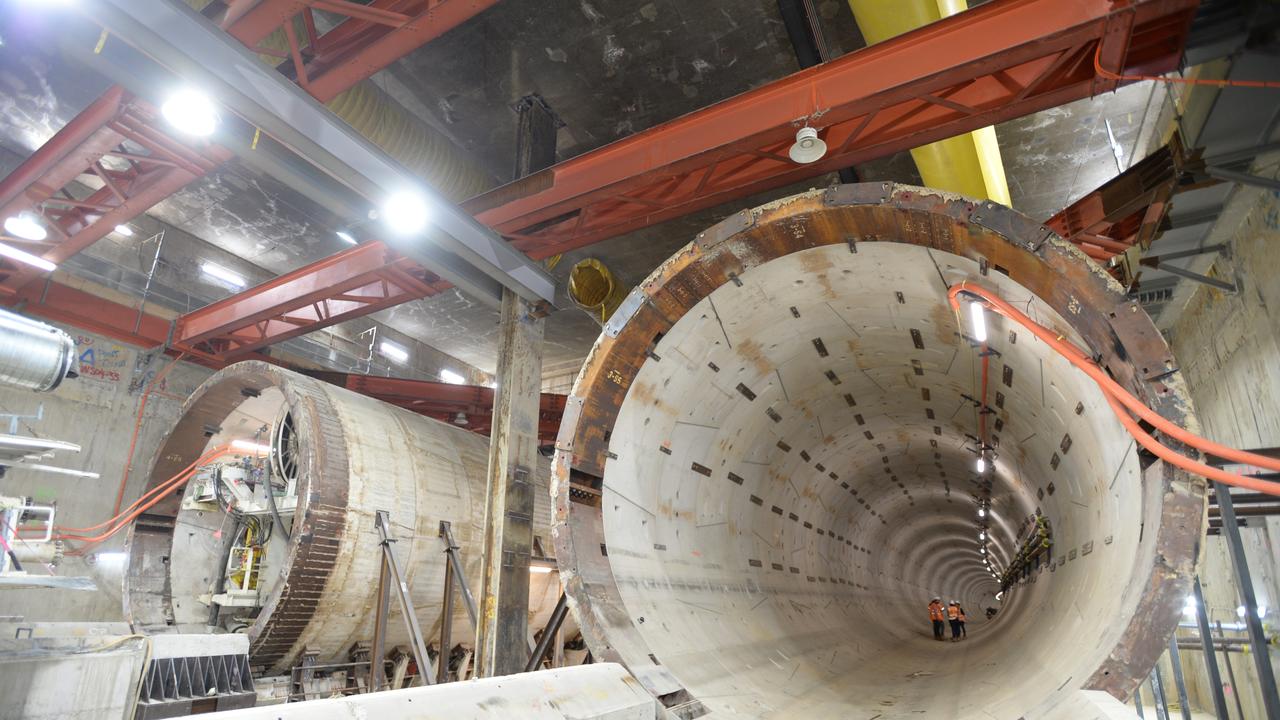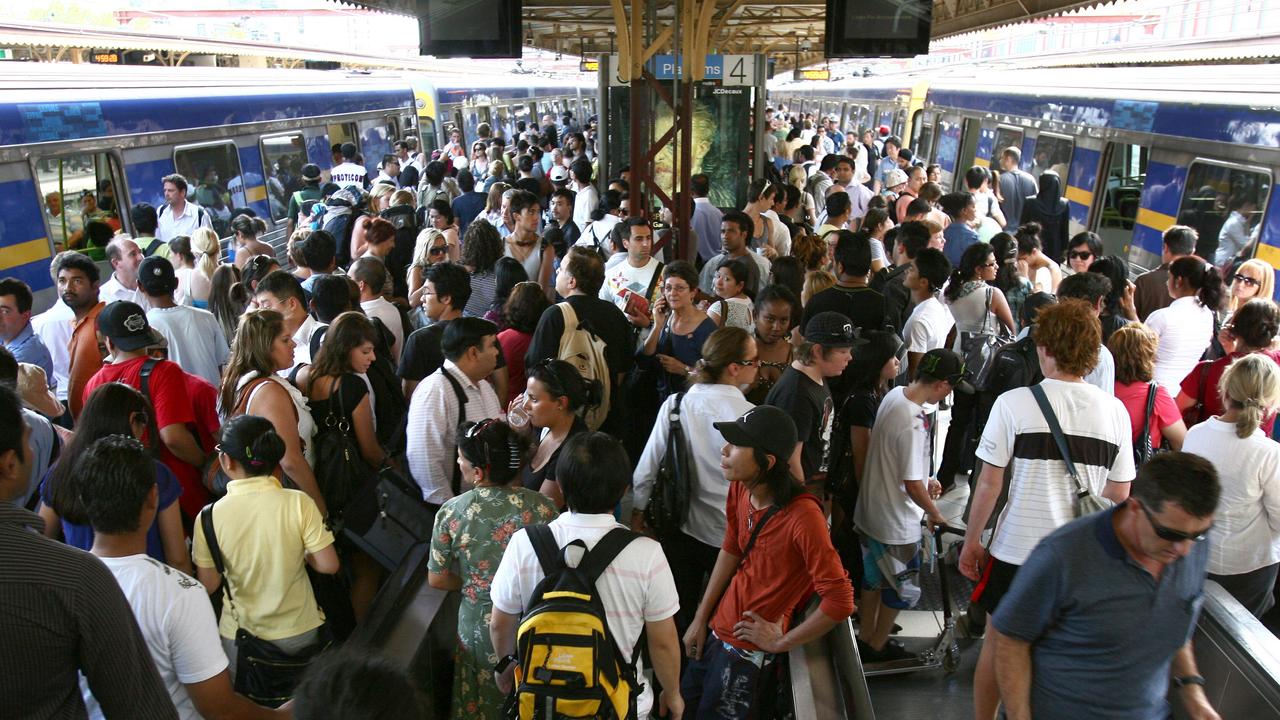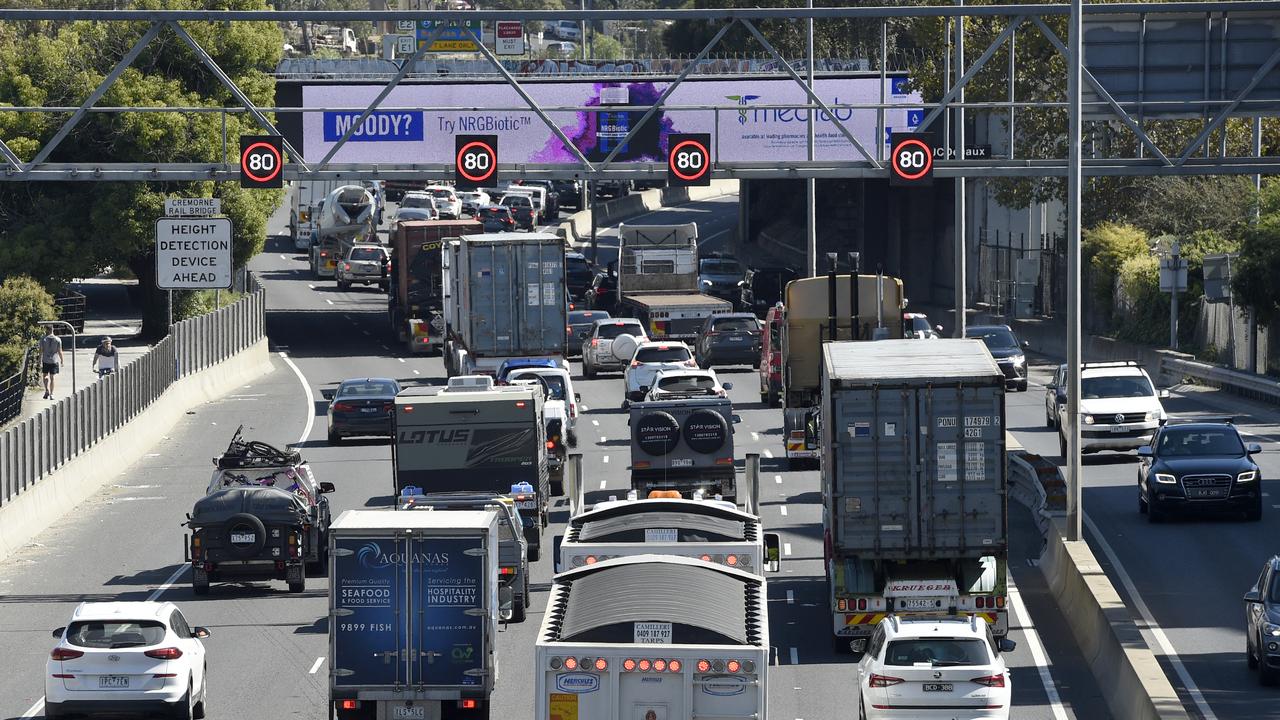Four big transport projects headline 30-year blueprint for Victoria
A new 30-year blueprint for Victoria has revealed the four key projects we need to bust congestion and secure the state’s future as we head towards a population of 10.8 million.
Parts of the City Loop should be shut down when Melbourne’s new Metro line opens in order to build an extra 3km of tunnels and extend the rail network, Victoria’s infrastructure advisory body says.
The overhaul of the CBD’s underground lines is one of four mega transport projects that are a centrepiece of Infrastructure Victoria’s new 30-year blueprint to deal with growing pains.
Building an outer metropolitan road and rail corridor around far northern and western suburbs, fixing traffic light sequences on arterials, and extending suburban rail lines are other key initiatives that would deliver bang for buck in the $100bn plan.

The government should also plan a Metro 2 rail line from Clifton Hill to Newport, and protect the corridor for a new cross-city road tunnel — similar to the East West Link Stage One killed off by Labor but which is on the Infrastructure Australia priority list — despite “no immediate need for a connection between the Eastern Freeway and CityLink”.
To complement big ticket items, Melbourne should introduce a congestion charge for its CBD and overhaul public transport and toll road charges to encourage people to travel off peak for cheaper prices.
Within 10 years, the state should migrate towards a new pricing system where fixed charges, such as car registration, are scrapped in favour of a “user pays” system, where motorists are charged based on distance and times travelled.
This controversial concept has been previously rejected by the Andrews government and state opposition, however.
The report, handed to the Andrews government this morning, takes into account a “pause” in population growth due to the pandemic, but forecasts a surge in people flocking to Victoria post-pandemic — with almost 11 million likely to call this state home by 2051.
The biggest impact would be on inner city suburbs, where population growth would reduce by 3.5 per cent, due to factors such as the work-from-home trend.
Infrastructure Victoria chief executive Michel Masson said recommendations “consider the medium to longer-term impacts of the global pandemic”.
“Our 30-year road map outlines how Victoria can make the most of the infrastructure we already have while ensuring new infrastructure, such as road and rail projects, deliver maximum value to areas where it is needed most,” he said.

Crippling congestion headaches are expected in Melbourne’s outer north and west and southeast, where 30 per cent of growth will occur by 2035.
A new Metro-style tunnel from Clifton Hill to Newport has again been recommended, but not before proper planning on costs and benefits, including on getting electrified train services through to Geelong.
And IV says land for a “cross-city” road, such as East West Link, should be retained — but did not give a timeline for when to start that project that has been promised by the state opposition.
To better plan for growth, the report recommends “prioritising home building in established suburbs” where possible because this “ultimately costs Victorians less than expanding in new growth areas”.
“Infrastructure costs in established suburbs with the capacity to support growth can be two to four times cheaper than in new growth suburbs,” it says.
The plan takes into account projects already being built or committed, such as the $15.8 billion North East Link and Suburban Rail Loop, without assessing them individually.
Central to the agency’s vision is better connecting people to work closer to home, with 5.5 million jobs expected to be needed within three decades.
“Every Victorian deserves good access to jobs, services, and public transport, whether they live in Mildura, Middle Park, Melton or Mallacoota,” Mr Masson said.
The report outlines actions needed to prepare for climate change and tackle emissions, including by boosting electric car use and mandating all new homes be 7-star energy rated.
Mr Masson said consultation with thousands of Victorians meant IV “adopted a faster timeline for phasing in electric vehicles and shifted our focus so that renters benefit from improved home energy efficiency”.
Infrastructure Victoria analysts say once the current $13.7bn Metro rail tunnel is complete by the middle of this decade, there will be a brief “window” of opportunity to fix the City Loop by building 3km of extra tunnels.
This “achieves significant capacity uplift at comparably low cost” with a benefit of up to $1.90 for every $1 spent, and would allow for northern rail lines to be extended towards Wallan and ease congestion in Seymour and Shepparton services.

A quarter of the City Loop would need to be shut down and more CBD construction chaos would occur — but the best time to do it would be when capacity is available rather than decades from now when passenger numbers will be higher.
Within three decades almost half of all cars are expected to be driverless automated vehicles, with new transport pricing recommended to encourage hitting roads at off-peak times.
In the short-term, the report says a dynamic congestion charge in the CBD and on new tollways — which slugs motorists more for peak time travel and gives discounts for off-peak — should be introduced.
Slashing bus and tram fares and introducing permanent bargain-basement off-peak prices for public transport would kickstart the behaviour change.
Public Transport Users Association spokesman Daniel Bowen said having a fast and connected transport network of trams, trains and buses was “essential” for the state’s future success.
“Infrastructure Victoria is to be applauded for highlighting that issues of road congestion, pollution, emissions and road trauma need to be addressed,” he said.
“Transport network pricing can be part of the solution — so too is providing more of Melbourne and regional cities with top-class public transport that more people will choose to use.”
Lord Mayor Sally Capp said the City of Melbourne had been advocating for “public transport connectivity into Fishermans Bend” which would bring investment into the area and provide “certainty” for industry.
“The northern Fishermans Bend tram connection and an extension to the Arden precinct will help connect Melburnians to jobs, services and education,” she said.
“We’re expecting 80,000 jobs to be established in Fisherman’s Bend as we create a world-leading advanced manufacturing innovation district.”
Ms Capp backed the advisory body’s calls for a business case to be completed for a Metro 2 rail line from Clifton Hill to Newport — which includes a new station at Fishermans Bend.
“Recommendations for more detailed planning surrounding the Melbourne Metro 2 project will ensure this important development delivers the crucial connectivity our city needs to grow into the future,” she said.
The report says more was needed to “build back better” after emergencies such as bushfires and that rural schools should be used to co-locate health services.
Under state laws, the government must respond to the plan within 12 months and put forward a 5-year infrastructure plan.
The body’s inaugural report in 2016 made 137 recommendations, with almost 90 per cent completed or under way.
A government spokesman said the strategy “presents a vision for a growing, inclusive and sustainable Victoria”.
The spokesman said the government’s record investment in transport, education, community and social infrastructure “is already transforming the way we live, work and spend our recreation time” and that the work done by IV would be considered in detail.
THE BIG BUILDS EXPLAINED
Originally published as Four big transport projects headline 30-year blueprint for Victoria




